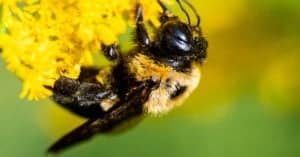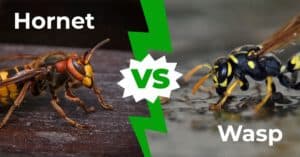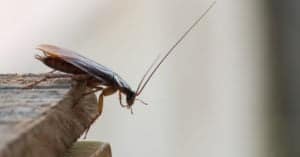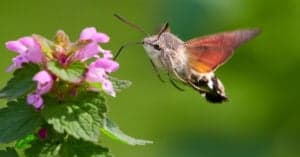Caterpillar vs Centipede: What Are the Differences?
@media (min-width: 481px) {
.mobile-top-content {
display: none;
}
}
#mobileTopContentCTACarouselControls { overflow: hidden; text-overflow: ellipsis; white-space: nowrap; }
.mobile-top-content .more { color: #fff; }
.mobile-top-content a { color: #fff; text-decoration: underline; }
.mobile-top-content a:hover { color: #fff; text-decoration: underline; }
@media (max-width: 480px) {
.mobile-top-content {
background-color: #06a10b;
color: #fff;
text-align: center;
/*height: 60px;
padding-top:5px;*/
font-size:80%;
/* display: block; */
margin: 0px -30px;
}
}
Caterpillars are a common, welcome sight in home gardens around the world. After all, most of them turn into beautiful butterflies or moths after they undergo their metamorphosis. Centipedes are another crawling creature, but they are not as welcome in people’s homes or gardens. Although both creatures have similar-looking bodies, caterpillars are insects and centipedes are arthropods, and they are both very distinct beings. We’re going to show you the differences between a caterpillar vs centipede so you can understand how these creatures are unique from one another.
Comparing a Caterpillar vs Centipede
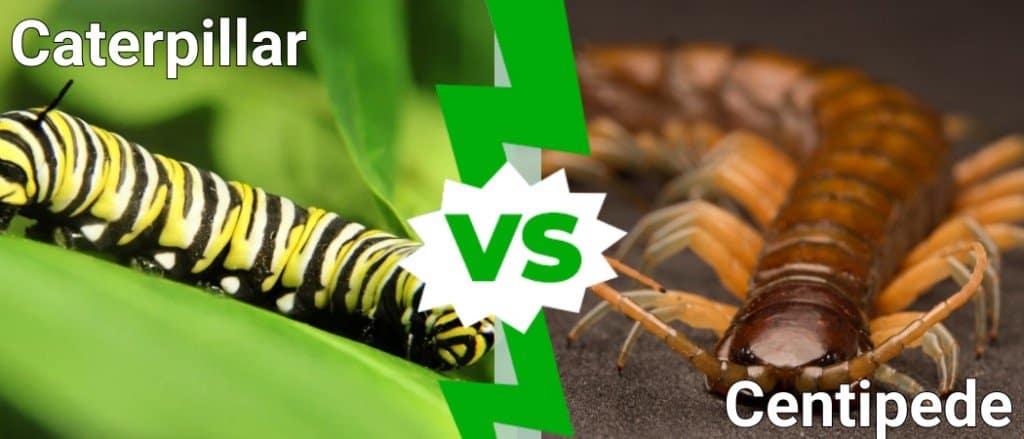
A-Z-Animals.com
| Caterpillar | Centipede | |
| Species | 21,000 | 3,000 |
| Diet | – Herbivorous – Eats leaves, plants, and parts of flowers |
– Carnivorous – Eats insects, spiders, and worms – Larger species can ear animals like mice, bats, and birds |
| Morphology | – Indistinct head that appears to be part of the body – Rounded body shape similar to a worm – Horns that stand out in some species |
– Distinct head – Flat body shape – Long, obvious mandibles – Antennae that stick out |
| Exoskeleton | – Soft and somewhat flexible exoskeleton | – Hard, tough exoskeleton |
| Legs | – 6 legs | Between 15 and 177 pairs of legs |
| Development | Incomplete, will enter a chrysalis and become a moth or butterfly | Already a complete anthropod that will simply grow larger and longer over time |
| Defenses | Venomous stinging hairs | A venomous bite that is not fatal to humans |
The 7 Key Differences Between a Caterpillar vs Centipede

frank60/Shutterstock.com
The most noticeable differences between a caterpillar vs centipede include their morphology, diet, and development. Caterpillars have round bodies with indistinct heads, small antennae, and horns in some species. On the other hand, centipedes have flat bodies, a distinct head, and prominent antennae that stick out very far from their body.
Besides, caterpillars have fewer legs than centipedes. While caterpillars are herbivores, centipedes are carnivores. Caterpillars are classified as insects, (although they are the larvae form of butterflies) but centipedes are classified as anthropods. And lastly, centipedes don’t go through metamorphosis whereas centipedes do.
These are the most significant differences between these organisms, but we are also going to explore several other facets of these creatures that set them apart.
Caterpillar vs Centipede: Species
There are many more species of caterpillars than there are species of centipedes. Currently, over 21,000 different species of the caterpillar have been identified around the world.
However, just 3,000 species of centipedes have been recorded. Yet, it is estimated that 8,000 species of centipedes might exist around the world. Although both creatures are very numerous, caterpillars are much more diverse.
Caterpillar vs Centipede: Diet

iStock.com/NATALYA DRALOVA
Caterpillars are herbivorous insects, but centipedes are carnivorous arthropods. Most caterpillars eat leaves, various plants, and parts of flowers from which they can derive nutrition. Centipedes prefer to eat other animals, insects, arthropods, and more.
While most centipedes are small and will use their speed and venom to hunt down their quarry, some of them are quite large. In fact, some centipedes are large enough to attack and kill mice, bats, and birds. However, these are not the types of centipedes that most people find in their homes.
Centipedes play a vital role in the ecosystem, killing and eating bugs that can infest a home. Still, that does not mean everyone should welcome them into their homes with open arms because centipedes come with some baggage in the form of painful bites.
Caterpillar vs Centipede: Morphology
Caterpillars are worm-like creatures with legs, an indistinct head that appears to be an extension of a body segment, small antennae, and horns in some cases. Their bodies are very different than centipedes which have a flat body shape, a distinct head, long mandibles that can be seen grabbing prey, and long antennae.
Some caterpillars, including the largest caterpillar known as the hickory horned devil, have obvious horns on the top of their head. Yet, their antennae are smaller relative to their bodies than centipedes’ antennae.
Caterpillar vs Centipede: Exoskeleton
Caterpillars have a relatively soft exoskeleton compared to a centipede. Caterpillars have a squishy body unless they’re very large. Centipedes have a tough, hard, chitinous exoskeleton.
The soft exoskeletons allow some caterpillars to use an “inching” type of locomotion rather than a crawling type of locomotion. Centipedes are less flexible, and they use a skittering crawling motion as their primary means of locomotion.
Caterpillar vs Centipede: Legs
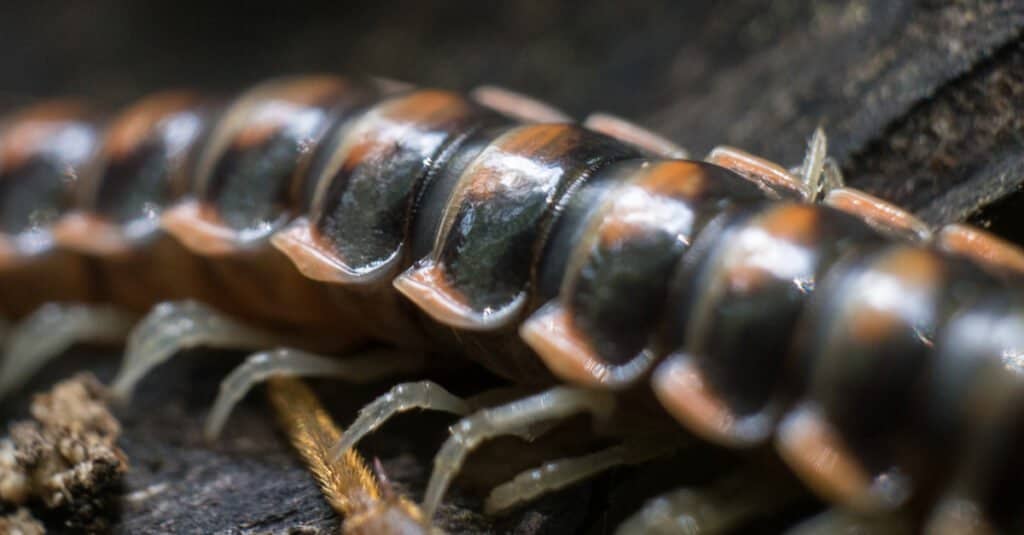
Marshall Barker/Shutterstock.com
Centipedes have many more legs than caterpillars. As insects, caterpillars have six legs, but centipedes are arthropods. That means they can have anywhere between 15 pairs of legs and 177 pairs of legs. It is possible that some undiscovered species could have even more legs!
The multiple pairs of legs that centipedes possess allow them to scurry about rather quickly. In fact, they are many times faster than the average caterpillar. Their speed and agility are important for helping these arthropods attack their prey and avoid predators such as birds and humans.
Caterpillar vs Centipede: Development

iStock.com/CathyKeifer
Caterpillars are insects that go through a metamorphosis and become moths or butterflies. Centipedes are individual creatures that spend their entire lives scurrying about on the ground. They do not undergo any rapid transformations in their lives.
Caterpillar vs Centipede: Defenses

popular business/Shutterstock.com
Caterpillars have weaker defenses as a species compared with a centipede. Some caterpillars, but not all, have stinging hairs that protrude from their body. These hairs are venomous. They will cause mild irritation in human beings, but they can outright kill other creatures.
Centipedes are known for their venomous bite that helps them incapacitate and kill their prey. Centipedes are not hostile, and they will rarely bite humans. However, centipedes can issue a painful bite, but their venom is not strong enough to be fatal to a human being. The only times that a centipede bite might be fatal is if the individual has an allergy to their venom.
All in all, centipedes and caterpillars are very different organisms. Caterpillars are insects and centipedes are arthropods. Yet, the differences between these creatures go much deeper. Caterpillars are often the early stages of a butterfly or moth. They’re soft creatures that don’t frighten people as much as the hard-bodied, skittering, and carnivorous centipede.
More from A-Z Animals
.more-snake-card-image { max-height:140px !important; }
@media (min-width: 481px) {
.mobile-top-content {
display: none;
}
}
#mobileTopContentCTACarouselControls { overflow: hidden; text-overflow: ellipsis; white-space: nowrap; }
.mobile-top-content .more { color: #fff; }
.mobile-top-content a { color: #fff; text-decoration: underline; }
.mobile-top-content a:hover { color: #fff; text-decoration: underline; }
@media (max-width: 480px) {
.mobile-top-content {
background-color: #06a10b;
color: #fff;
text-align: center;
/*height: 60px;
padding-top:5px;*/
font-size:80%;
/* display: block; */
margin: 0px -30px;
}
}
Caterpillars are a common, welcome sight in home gardens around the world. After all, most of them turn into beautiful butterflies or moths after they undergo their metamorphosis. Centipedes are another crawling creature, but they are not as welcome in people’s homes or gardens. Although both creatures have similar-looking bodies, caterpillars are insects and centipedes are arthropods, and they are both very distinct beings. We’re going to show you the differences between a caterpillar vs centipede so you can understand how these creatures are unique from one another.
Comparing a Caterpillar vs Centipede

A-Z-Animals.com
| Caterpillar | Centipede | |
| Species | 21,000 | 3,000 |
| Diet | – Herbivorous – Eats leaves, plants, and parts of flowers |
– Carnivorous – Eats insects, spiders, and worms – Larger species can ear animals like mice, bats, and birds |
| Morphology | – Indistinct head that appears to be part of the body – Rounded body shape similar to a worm – Horns that stand out in some species |
– Distinct head – Flat body shape – Long, obvious mandibles – Antennae that stick out |
| Exoskeleton | – Soft and somewhat flexible exoskeleton | – Hard, tough exoskeleton |
| Legs | – 6 legs | Between 15 and 177 pairs of legs |
| Development | Incomplete, will enter a chrysalis and become a moth or butterfly | Already a complete anthropod that will simply grow larger and longer over time |
| Defenses | Venomous stinging hairs | A venomous bite that is not fatal to humans |
The 7 Key Differences Between a Caterpillar vs Centipede

frank60/Shutterstock.com
The most noticeable differences between a caterpillar vs centipede include their morphology, diet, and development. Caterpillars have round bodies with indistinct heads, small antennae, and horns in some species. On the other hand, centipedes have flat bodies, a distinct head, and prominent antennae that stick out very far from their body.
Besides, caterpillars have fewer legs than centipedes. While caterpillars are herbivores, centipedes are carnivores. Caterpillars are classified as insects, (although they are the larvae form of butterflies) but centipedes are classified as anthropods. And lastly, centipedes don’t go through metamorphosis whereas centipedes do.
These are the most significant differences between these organisms, but we are also going to explore several other facets of these creatures that set them apart.
Caterpillar vs Centipede: Species
There are many more species of caterpillars than there are species of centipedes. Currently, over 21,000 different species of the caterpillar have been identified around the world.
However, just 3,000 species of centipedes have been recorded. Yet, it is estimated that 8,000 species of centipedes might exist around the world. Although both creatures are very numerous, caterpillars are much more diverse.
Caterpillar vs Centipede: Diet

iStock.com/NATALYA DRALOVA
Caterpillars are herbivorous insects, but centipedes are carnivorous arthropods. Most caterpillars eat leaves, various plants, and parts of flowers from which they can derive nutrition. Centipedes prefer to eat other animals, insects, arthropods, and more.
While most centipedes are small and will use their speed and venom to hunt down their quarry, some of them are quite large. In fact, some centipedes are large enough to attack and kill mice, bats, and birds. However, these are not the types of centipedes that most people find in their homes.
Centipedes play a vital role in the ecosystem, killing and eating bugs that can infest a home. Still, that does not mean everyone should welcome them into their homes with open arms because centipedes come with some baggage in the form of painful bites.
Caterpillar vs Centipede: Morphology
Caterpillars are worm-like creatures with legs, an indistinct head that appears to be an extension of a body segment, small antennae, and horns in some cases. Their bodies are very different than centipedes which have a flat body shape, a distinct head, long mandibles that can be seen grabbing prey, and long antennae.
Some caterpillars, including the largest caterpillar known as the hickory horned devil, have obvious horns on the top of their head. Yet, their antennae are smaller relative to their bodies than centipedes’ antennae.
Caterpillar vs Centipede: Exoskeleton
Caterpillars have a relatively soft exoskeleton compared to a centipede. Caterpillars have a squishy body unless they’re very large. Centipedes have a tough, hard, chitinous exoskeleton.
The soft exoskeletons allow some caterpillars to use an “inching” type of locomotion rather than a crawling type of locomotion. Centipedes are less flexible, and they use a skittering crawling motion as their primary means of locomotion.
Caterpillar vs Centipede: Legs

Marshall Barker/Shutterstock.com
Centipedes have many more legs than caterpillars. As insects, caterpillars have six legs, but centipedes are arthropods. That means they can have anywhere between 15 pairs of legs and 177 pairs of legs. It is possible that some undiscovered species could have even more legs!
The multiple pairs of legs that centipedes possess allow them to scurry about rather quickly. In fact, they are many times faster than the average caterpillar. Their speed and agility are important for helping these arthropods attack their prey and avoid predators such as birds and humans.
Caterpillar vs Centipede: Development

iStock.com/CathyKeifer
Caterpillars are insects that go through a metamorphosis and become moths or butterflies. Centipedes are individual creatures that spend their entire lives scurrying about on the ground. They do not undergo any rapid transformations in their lives.
Caterpillar vs Centipede: Defenses

popular business/Shutterstock.com
Caterpillars have weaker defenses as a species compared with a centipede. Some caterpillars, but not all, have stinging hairs that protrude from their body. These hairs are venomous. They will cause mild irritation in human beings, but they can outright kill other creatures.
Centipedes are known for their venomous bite that helps them incapacitate and kill their prey. Centipedes are not hostile, and they will rarely bite humans. However, centipedes can issue a painful bite, but their venom is not strong enough to be fatal to a human being. The only times that a centipede bite might be fatal is if the individual has an allergy to their venom.
All in all, centipedes and caterpillars are very different organisms. Caterpillars are insects and centipedes are arthropods. Yet, the differences between these creatures go much deeper. Caterpillars are often the early stages of a butterfly or moth. They’re soft creatures that don’t frighten people as much as the hard-bodied, skittering, and carnivorous centipede.

